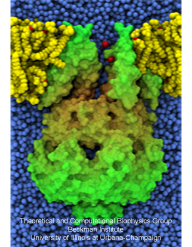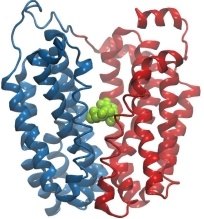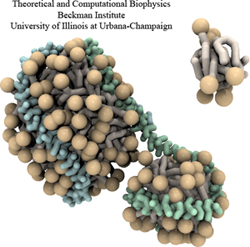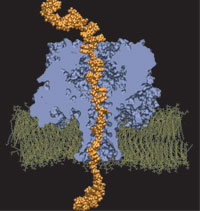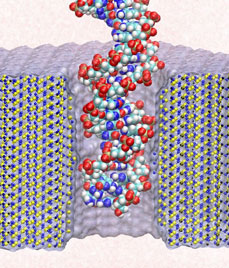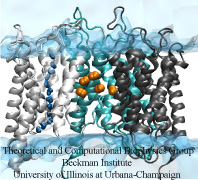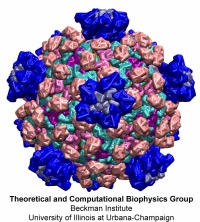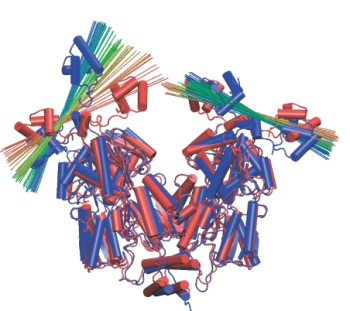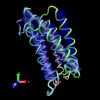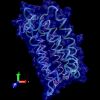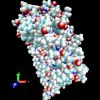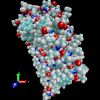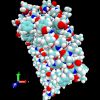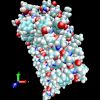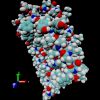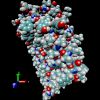Molecular Representations in VMD
VMD provides a wide range of molecular representations, coloring styles, transparency and material properties. This page contains a gallery of images which exemplify a subset of these features. All of the images on this page were created within VMD, and saved using the snapshot feature capturing the image directly from the graphics window. All of these images were rendered with VMD's antialiasing feature enabled. Some were also rendered with the depth cueing feature enabled.
Example Scenes
The examples images below should help to give quick grasp of the
range of figures that can be made with VMD and its companion plugins
and related programs.
Molecular Representations
Molecules may be drawn as lines, bonds, CPK, licorice, VDW spheres, ribbons,
tubes, surface, secondary structure cartoons, points, C-alpha traces, and
surfaces. Examples of each of these representations for bacteriorhodopsin
are given below.
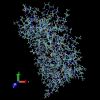
Lines |
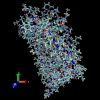
Bonds |
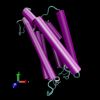
Cartoon |
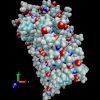
VDW |
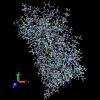
CPK |
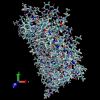
Licorice |
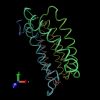
Tube |
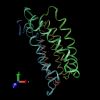
Ribbons |
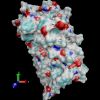
Surf |
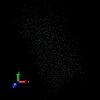
Points |

Trace |
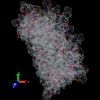
Solvent |
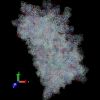
Dotted |
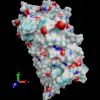
MSMS |
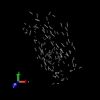
H-Bonds |
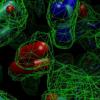
Isosurface |
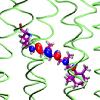
Electron Orbitals |
Coloring Styles
For each of these representations shown above, you
may color by atom, residue, segment, molecule name, mass, charge,
occupancy, position, and backbone. The pictures shown above were
colored by atom name. The examples below illustrate a few of
the coloring styles supported in VMD.
(this example structure isn't complex enough to demonstrate
coloring by structure, chain, beta, occupancy, etc)
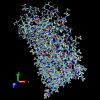
Name |
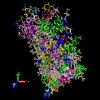
ResName |
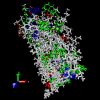
ResType |
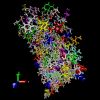
ResID |
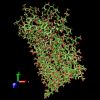
Mass |
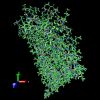
Charge |
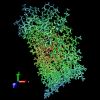
Position |
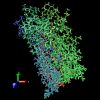
Index |
Transparency and Materials
VMD provides controls for the "material properties"
used to shade molecular scenes. These material properties
include ambient lighting, diffuse lighting, specular highlights
(and reflections), and opacity/transparency.
Transparency allows one to superimpose 3-D structures atop
one another to see the surface, and the inner structure.
Display and rendering features
VMD provides user controls for the rendering techniques
and lighting parameters used to shade molecular scenes.
These controls include antialiasing, depth cueing, backface culling,
and lighting parameters.
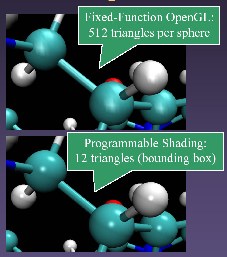
Spheres drawn using VMD's GLSL-based sphere ray tracer and with traditional OpenGL |
|
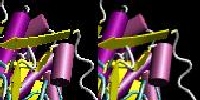
Cartoon representation with and without antialiasing |
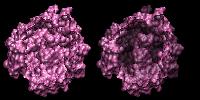
MSMS representation with and without depthcueing |
By using VMD's powerful atom selection language, multiple molecular representations may be applied to arbitrary groups of atoms simultaneously. Examples of simultaneous representations can be found in the Group's image gallery.

